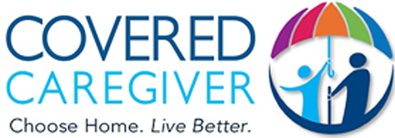A new study entitled “More Than Half a Million Older Californians Fell Repeatedly in the Past Year” by the UCLA Center for Health Policy Research, found that in 2012, Californians over the age of 65 visited the Emergency Department (ED) over 185,000 times for falls.
More than 72,000 of those visits led to hospitalizations and, tragically, over 1,800 older Californians died.
An older adult can find themselves living at home comfortably one day, experiencing a fall the next, and being hospitalized hours later. Naturally, that person is discharged days later only to be admitted to a skilled nursing facility for rehabilitation. A person could remain at this outpatient facility for up to 100 days as standard by their health plan, if other complications resulted because of the fall.
During those 100 days, decisions by family members and/or health professionals can result in an older adult finding themselves in the fast lane to losing out on their golden years in a nursing home or assisted living facility and never seeing home again.
This is an all-too-common scenario and costs California over $2 billion annually and moreover, often costs an individual their entire retirement savings.
Instead, consider a pre-fall scenario. Rewind that scenario to see what might occur instead if that older adult and their family had made a senior home care decision and chosen a caregiver option.
The presence of a caregiver with a senior can dramatically reduce falls and, if falls do occur, response times are considerably faster minimizing further injury. The consequences of a fall can be dire: not only is the trauma of the injury a risk, but the initial risks such as hypothermia and muscle damage, as well as hospitalization-associated complications such as pneumonia, blood clots, and pressure sores are other complications that gravely increase the mortality of senior falls.
These consequences can extend an older adult’s 100-day visit in the skilled nursing facility up to a year and can involve multiple transports back and forth to the hospital in that time period.
Home care and caregiver agencies have established a community standard for helping seniors and their families get the help they need to both gain and preserve their control of their independent lifestyles at home. The aforementioned UCLA study recommended “Making home modifications, such as reducing slip and trip risks, since most falls occur inside the person’s home; and modifying high-risk daily routines, such as wearing inappropriate footwear or walking on uneven pavement.”
So at any senior home care service, because they understand the severity of falls, the very first task caregivers take on once they are assigned to an elderly client in their home is to perform a home safety and fall-risk assessment.
The UCLA study states “40% of elders who sought care for a fall said they did not discuss how to avoid future falls with their provider.” Having a senior home care solution (i.e. caregiver) during this crucial timeline changes the equation, completely.
First, a caregiver’s experience and healthcare background lends them to suspect early if an older adult would be prone to falls, allowing them to adjust the care plan to prevent this from occurring. Second, if a fall were to occur, the caregiver is at the senior’s side and can also accompany the senior to the ER visit or throughout the hospitalization — asking the right questions, taking notes and following doctor’s orders on how to avoid future falls.
The study recommends community-wide government aided programs for fall-risk screenings and assessments as the “say-all and do-all.” At the individual level, a more targeted approach might include the use of a caregiver to facilitate their safety and independence.
Provision of in-home care services, through home caregiving, is cost-effective (sometimes 2-3 times less than at a long term facility) and benefits patients by minimizing fall-risk probabilities and facilitating post-fall management success, thus improving their continuity of care and their ability to achieve a speedy and complete home recovery.


